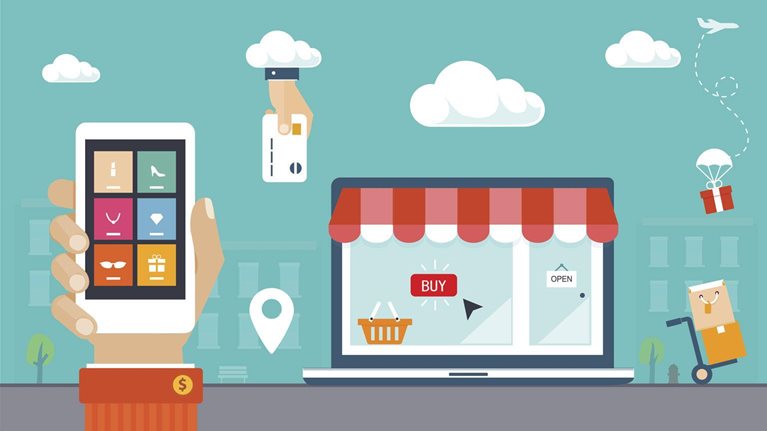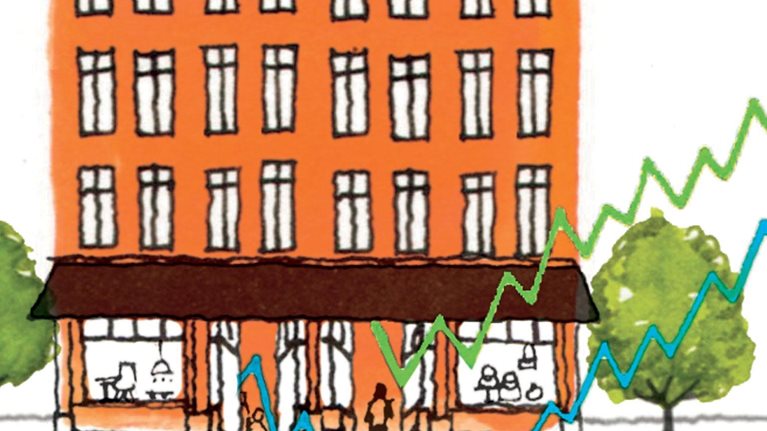In most global markets, online grocery is just beginning to show promise. The expanding online offerings of retailers such as Tesco and Ahold in Europe, as well as FreshDirect and AmazonFresh in the United States, are making news. Services such as “click and collect” or “buy online, pick up in store” appear to be gaining traction with consumers.1
To some, it may seem like early days for online grocery, but Christian Wanner has been at it since 1997—back when a web page could take 20 seconds or more to load, the typical household had no Internet connection, and most consumers were not yet comfortable with the idea of buying things online. That year, Wanner cofounded LeShop.ch, Switzerland’s first online grocery store. LeShop is now part of the Swiss retail cooperative Migros and has been profitable since 2011.
Wanner served as LeShop’s CEO from 2000 until 2013. He remains on LeShop’s board and is a senior adviser to McKinsey. In January, McKinsey’s Enrique García López, along with Rémi Said and Khiloni Westphely, spoke with Wanner about his views on multichannel retail, the best operational models for online grocery, mistakes chief marketing officers make, and the power of mobile devices.
McKinsey: LeShop is a success story, but it’s one of only a few so far in online grocery. Why should grocers get into e-commerce at all?
Christian Wanner: Food retailers can’t afford not to take e-commerce seriously in the long run. The cynics will say, “Even after 15 years of e-commerce in food retailing, we’re talking about at best 3 to 5 percent market share, compared with 50 percent in travel or 35 percent in electronics in mature markets.” To this, I would have two replies: first, it’s true that shopping habits in grocery change at a slower pace than in other categories—but, given much lower margins in grocery, if you lose 5 percent of customers to a competitor’s online proposition, that makes a big difference in both your profit and loss (P&L) and your competitor’s P&L. What’s more, online grocery typically attracts the most profitable customers: dual-income households, customers who prioritize convenience over price or promotions, big-spending customers—these are the type of customers you’ll be making more loyal to the franchise.
Second, digital literacy is evolving at an exponential pace. It took LeShop eight years to reach its first €50 million in sales on PCs but just three years to reach €50 million in sales on mobile phones. Retailers shouldn’t underestimate the “digital natives” generation. They need to begin transforming their organizations now; otherwise, they will have a rude awakening when outsiders like Amazon start entering their market.
McKinsey: Many grocers worry that online sales will only cannibalize store sales. What are your thoughts on that?
Christian Wanner: Two comments: first, if you don’t cannibalize your own business, someone else will do it for you. If you do not serve new consumer needs, your competitor will. Second, we conducted several studies on cannibalization, which repeatedly proved that a multichannel offer increases your overall share of wallet. For example, by isolating 5,000 households new to LeShop during one year and tracing their behavior with the Migros stores in the previous year, we observed a total sales increase of 30 percent among those households. Store sales to those customers declined by around 10 percent, but that decline was more than offset by the growth in the online business—and in a flat market, the cannibalization was clearly at the expense of our competitors.
Another study, involving a very big sample group, demonstrated clearly that our customers who shop both online and in stores spend twice as much as customers who shop only in stores, indicating that our online offering attracts higher-value customers. And customers who use three channels—traditional stores, home delivery, and Drive2 —spend 2.3 times as much.
McKinsey: Retailers today are experimenting with a variety of operational models for these new channels—fulfilling online orders from existing warehouses, from new dedicated warehouses, and even from stores. Will all these models continue, or will there be a convergence?
Christian Wanner: Convergence has already taken place on the transactional side: in website and mobile navigation, how you present the offer, and recipe and recommendation features. Website ergonomics and transactional behavior are similar across geographies and cultures, so you can leverage similar systems in different countries.
But I don’t yet see a strong convergence in logistics—there are just too many geographical and sociological differences, as well as business-model beliefs. In Latin America, for instance, the more affluent people are highly concentrated in certain areas of the city. In Buenos Aires, if you address those few neighborhoods, you’ve basically covered the relevant market for online grocery because 80 percent of the population is simply not at a socioeconomic level that will support your business. In such regions, you can go with a dedicated warehouse close to the geography you want to serve. This model will not be valid in Switzerland, for instance, where there is more of a mix of social classes geographically.
Then, you have differences in population density. Take the Netherlands versus France. The low population density in France probably explains the roaring success of the click-and-collect model versus home delivery, whereas in the Netherlands—where the population is very concentrated—the home-delivery model is viable almost nationwide. Ahold’s click-and-collect service is making serious inroads as well, because it brings extra convenience to the customer versus home delivery. Logistics choices also depend on a company’s existing assets, heritage, and capital-expenditure capacity. There is no single best practice you can roll out worldwide.
That said, already we see some models fading, such as store picking—that is, fulfilling online orders from stores. I don’t think that in 2014 your logistics strategy can sustainably be based on store picking, unless it’s a defensive strategy in a marginal business and you are picking in a very big hypermarket. Store picking is not industrially efficient if you account for true costs, and it does not fulfill the promise to the customer, because it results in many orders that have substitutes or missing products.
McKinsey: But couldn’t a retailer start with store picking and then gradually move to a more capital expenditure–intensive model such as warehouses or “dark stores”?
Christian Wanner: First, we will need to agree on the definition of a dark store. Tesco was the first to coin that term, I think, and at that time it meant a warehouse with exactly the same layout as a traditional store but without customers. This is certainly not a model I would advocate, because it fails to adapt the layout and workflow to create picking efficiency. Tesco has quickly recognized this, and each successive version of its warehouse integrates more automation and workflow efficiency.
To your question of whether store picking would be a sound starting strategy, with the intention of learning the business and then moving to something more sophisticated: it may have been a viable option for a retailer back in 2000, but not today, because your organization will be learning the wrong things. In store picking, the energy of the online team, the IT people, and the general manager will be spent on avoiding out of stocks, which means their energy will be spent on things like substitute management and product-supply planning.
You cannot imagine how much energy goes into substitute management: proposing intelligent substitutes, then having a whole logistics process for the customer to receive the substitute. You have to pick the substitute separately from the rest of the items so that you can ask the customer whether she agrees with the substitutes, and if the customer says, “I agree with this one but not with that one,” then you need a process whereby the rejected substitute comes back to the store, and you need a process to manage the price difference between what she originally ordered and the substitute, and so on and so forth. Little of this is useful when you scale the operation and move to a dedicated warehouse, which can fulfill 98 or 99 percent of orders with the exact products that the customer wanted. So I think it is wiser to set up a dedicated infrastructure and organization up front and then fine-tune it until it is ready to be scaled up.
But a dedicated infrastructure isn’t necessarily an enormous and fully automated warehouse. You still have to make important choices as to geographical reach, assortment depth, mode of delivery, and so on. It would be a mistake to start with a highly automated and capital-intensive warehouse before having gained experience in all the above aspects first.
McKinsey: Companies are understandably hesitant to make big bets on online grocery because profitability is far from assured.
Christian Wanner: It’s a “chicken or egg” debate. If you don’t commit yourself seriously to this business, you will simply never achieve any significant breakthrough. Online grocery is certainly a very difficult business to make profitable, but it has proved possible. LeShop’s home-delivery business has been profitable since 2011, and this is in Switzerland, where we pay warehouse workers between €3,800 and €4,000 a month, including bonuses. But achieving profitability takes hard work. It requires chasing every second, chasing every source of inefficiency, chasing every mistake you make to avoid paying the cost of correcting those mistakes.
I’ve found that many traditional retailers are stuck in paradigms or make choices that impede profitability in their online business. Take, for example, the “long tail” obsession: I come across traditional retailers who can only envisage their online store having exactly the same assortment as their hypermarket format, thus 30,000 SKUs. This is an ideological positioning, not a pragmatic positioning to start with. You typically have the chief marketing officer saying, “There is no way we should enter online with a smaller assortment than our biggest hypermarket, because that’s what the customer expects.” The problem is, your logistics complexity and costs increase exponentially with assortment depth, and the customer will hardly pay that premium. In my experience, if you have 13,000 SKUs, the last 1,300 of them will account for less than 1 percent of sales. So, you can only imagine what it means for 30,000 SKUs. It would require probably eight times the capital investment, because thousands of slow-moving SKUs will need automated instead of manual picking. It’s not impossible to manage a warehouse with 30,000 SKUs or more—Ocado is doing that successfully—but you need to be aware that it has direct and heavy consequences on your capital expenditures and organization.
Another area where you need to make hard choices is your online promotional strategy. Should you have exactly the same promotional schemes as you have in your stores, or can you leverage the advantages e-commerce offers? For example, in e-commerce, you can tailor promotions based on customer behavior, which you can’t really do in the traditional supermarket, except through loyalty cards. You might be losing a lot of margin points if the chief marketing officer insists on exactly the same product range and the same promotional scheme online and offline.
McKinsey: Are you saying the online business should be completely separate from the traditional retail business?
Christian Wanner: After 16 years in this industry, I still find it vibrant and fascinating because there is no absolute golden rule. The right structure depends on how the parent company is organized. A centralized company would require a different structure than a decentralized cooperative.
What is clear, however, is that retailers should not regionalize e-commerce; it has to be at least national, if not transnational, meaning that you use the same website and the same technological platform in every country. It doesn’t make sense to have several teams developing multiple websites and mobile platforms.
But should the web and mobile platform be developed by the corporate IT team or by a separate team? My opinion is that it has to be a separate, dedicated team. The main issue is the speed of releases: if you are just 1 percent of the business, you will hardly be a priority. You might be a priority for corporate IT when the project starts, but after version one has been delivered and you need changes, you will probably wait a long time for those changes. And in e-commerce, you’d better have a release of either bug fixes or improvements every four weeks.
I also think logistics should be driven by a dedicated team, not the central logistics team. E-commerce logistics is about picking and transporting single products, which is not a core competency of traditional retailers. Again, this competency has to be developed by the e-commerce team, with no legacy systems restraining it.
What about category management? My opinion is you need dedicated people looking at what’s happening in e-commerce and being very reactive to customers: tailoring the assortment, the promotional scheme, and so on.
McKinsey: What changes do you foresee in online grocery in the next few years?
Christian Wanner: Consumer behavior is evolving fast. Customers now expect to be able to interact digitally with any merchant, so a robust digital presence has become a must. When we launched our first iPhone app, in 2010, we did not foresee that three years later, one-third of our orders would be coming from an iPhone or iPad. Frequency was around 20 days between two orders on the website; it accelerated to 10 days between orders on the mobile phone. Our supermarket is technically in the handbag or pocket of our customers all the time. Our app even allows them to shop when they are offline. The screen is small, but repeat customers are able to drop 60 items into their basket in less than 10 minutes—that’s efficient shopping! So is technology evolving? Yes, but, more important, consumer behavior and expectations are evolving. And we’re not talking about tech freaks here—we’re talking about 50 percent of our customers shifting to mobile. This is an unstoppable megatrend.
In the coming years, retailers will need to work on what we call multichannel or cross-channel or omnichannel—that is, harmonizing the channel experience for the customer. It is about combining the digital power of e-commerce with the infrastructure and service of bricks and mortar, and determining what role each will play. We will have to leverage the richness of online information in the convenience channel because that is where the battle will be won. We will need to move the battle away from “I have the cheapest stuff” to “I have the best service.” At the end of the day, the winners will be those retailers that best understand the patterns of behavior of their customers and respond to those patterns intelligently.



